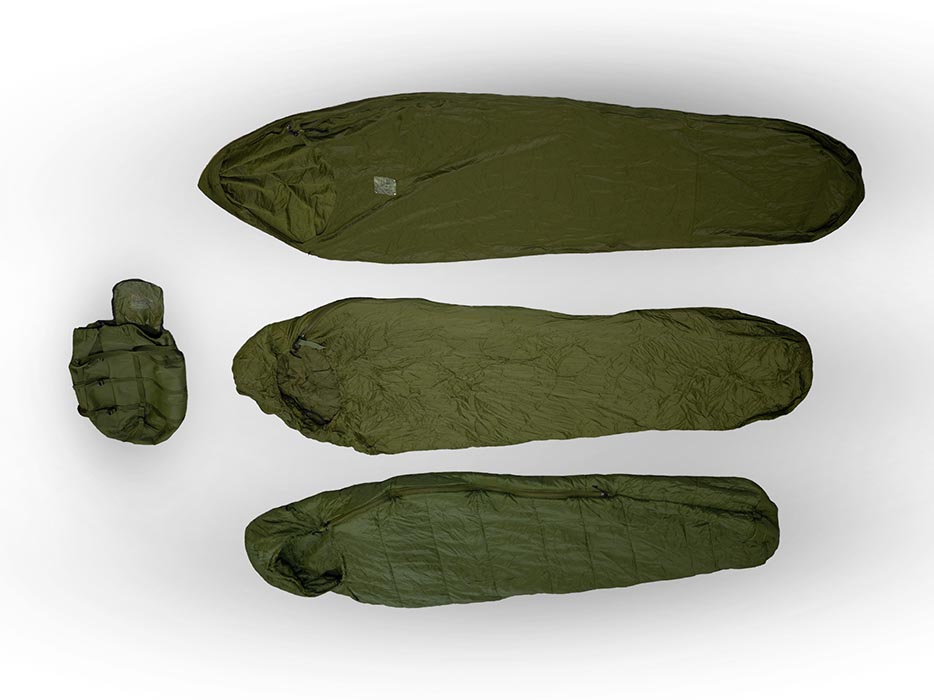New sleeping system covers all the bases, from Iraq to the Arctic
Article / February 28, 2023 / Project number: 22-0141
Note: to view additional photos, click the photo under Image Gallery.
By Steven Fouchard, Army Public Affairs
They may not be the first thing that comes to mind when we think about a modern military force, but sleeping bags are vital equipment, and the Canadian Army (CA) is introducing a new type that will keep soldiers warm and healthy in all kinds of weather.
The General Purpose Sleeping Bag System (GPSBS) is replacing its Cold War era predecessor, known as the Sleeping System Outfit, Extreme Cold Weather (SSOECW).
“The SSOECW is a down and feather bag,” explained Alexandre Legault, a member of the GPSBS project team. “It actually had some really good, interesting design characteristics but we really needed to modernize.”
As the old system’s name suggests, it was more than suitable for the cold. The GPSBS, explained Mr. Legault, is suited to a much wider range of conditions.
“The down bags are great for the cold winters here but we’re not always in Canada,” he said. “We’re all over the planet. Not every theatre or operational environment is in Northern Alberta.”
While the GPSBS is already quite versatile, Mr. Legault noted, further enhancements are being explored, including an add-on component for extreme cold.
“It’s about making sure we have everything the soldier needs to be able to perform in Iraq in the summer all the way to the high Arctic in the winter.”
The lightweight GPSBS, which includes synthetic insulation in place of down, covers all those bases with a design that essentially offers the user three configurations in one package.
“You have the outer insulating bag, which is a warmer weather bag,” said Mr. Legault. “It’s for really hot, humid climates. It’ll keep you warm when the temperature starts to dip later in the night because the GPSBS synthetic insulation retains more warmth than down when wet, and also dries faster.”
“The inner bag is a little beefier,” he added. “It’s more suitable for below zero. We’ve all seen that winter weather where you still have slush on the ground even though it’s below freezing. It’s able to handle getting some of that moisture in it. And then you can use the two together for the coldest conditions.”
Warrant Officer Duane Gyuricska another member of the GPSBS project team, explained just how dangerous a wet sleeping bag can be.
“Down does not perform when it’s wet,” he said. “And it becomes a safety issue, really. You can get hypothermia in the dead of summer if you’re wet. I’ve seen it; you can have a 35-degree day but at night you get wet and you’re cold and hypothermia kicks in.”
That high level of moisture resistance is also important for those times when soldiers have to move quickly.
“Something might happen,” said WO Gyuricska, “and you have to pack up quick. So everything just gets stuffed into a bag and away you go. There isn’t always going to be time to air out and clean your kit. That’s just the way it is. This bag will bounce back better from that.”
That said, project team member Captain Jun Bae added that it’s important for users to maintain their bags when not in the field.
“When we come back, we should be taking the bag out, making sure it’s dry and in good condition before we put it back in the sack,” he said. “People are tired and they’re just going to shove their entire valise that now has this very moist sleeping bag into their lockers. And they forget about it until the next exercise.”
“This equipment is good for us. It’s modernized, it works. But only if you take care of it.”
Improvements were made to the GPSBS version now being fielded in response to early user feedback.
“We were able to interrupt some things that weren’t as functional as we would have liked and improve on them,” said Mr. Legault. “Several of the parts are second generation.”
“And we’re going to take a bigger round of feedback this year,” he added. “We did a bit of an alpha release and now we have more people using it to support that process; we’re doing a bigger rollout and taking their feedback. When we were in Edmonton recently, we heard good things.”
